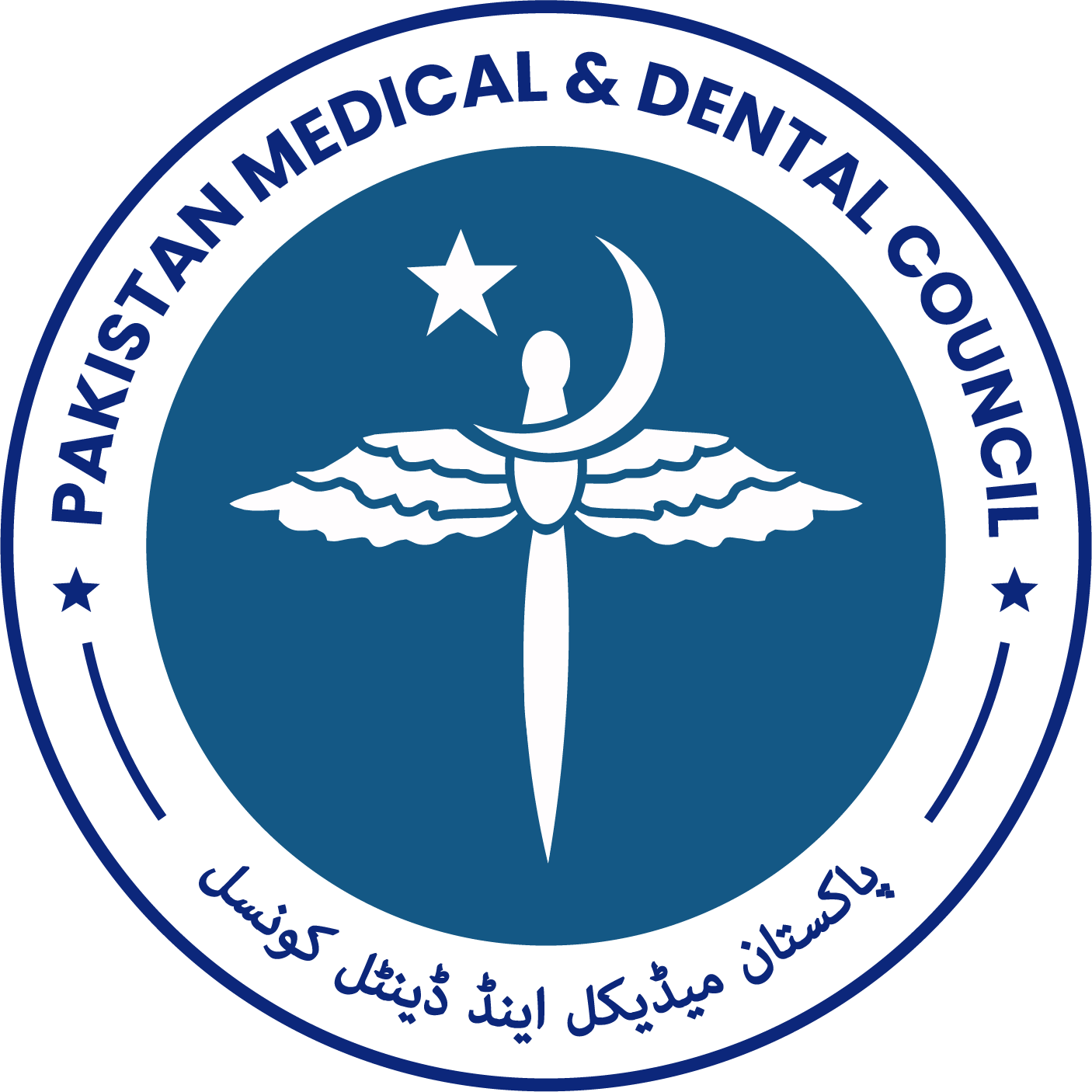Ambulatory Hysteroscopy in Abnormal Uterine Bleeding: A Tertiary Care Hospital Perspective
DOI:
https://doi.org/10.53685/jshmdc.v3i2.122Keywords:
Outpatient hysteroscopy, Endometrial biopsy, Abnormal uterine bleedingAbstract
Background: To avoid delays in outpatient facilities for managing benign gynecological conditions like abnormal uterine bleeding (AUB), there is a need to evaluate the usage of unconventional methods like outpatient hysteroscopy.
Objectives: To evaluate the usage of outpatient diagnostic hysteroscopy in women with abnormal uterine bleeding.
Methods: An observational study was conducted at the Obstetrics and Gynecology Department of Combined Military Hospital, Kharian. The study included 56 women having AUB with or without a history of failed medical treatment. The study participants underwent outpatient diagnostic hysteroscopy. Diagnostic hysteroscopy was done under the local para-cervical block in the Outpatient department. Procedure indications, outcome and biopsy findings were recorded on predesigned proformas.
Results: Median age of the study participants was 44 years. The most common indications for diagnostic hysteroscopy were postmenopausal bleeding (34%) and heavy menstrual bleeding (28%). Hysteroscopy outcomes included endometrial biopsy (34%), discharge with no biopsy (25%), further test and evaluations required (21%), and admission due to failed outpatient procedures (20%). Sixty-two percent of the study participants had normal biopsy findings while other biopsy findings included polyps (20%), fibroids (14%) and endometrial hyperplasia (4%). Nine percent had unsuccessful hysteroscopy due to patient refusal to proceed.
Conclusion: Outpatient hysteroscopy can be helpful in the early and rapid diagnosis of women with abnormal uterine bleeding.
References
Sinha P, Yadav N, Gupta U. Use of hysteroscopy in abnormal uterine bleeding: An edge over histopathological examination. J Obstet Gynaecol India. 2018; 68(1): 45-50. doi: 10.1007/s13224-017-1065-5. DOI: https://doi.org/10.1007/s13224-017-1065-5
Heavy menstrual bleeding: assessment and management. NICE Guidelines, 2018. www.nice.org.uk/guidance/ng88
Richmond D, Sherwin R. Maternity and Gynecology: GIRFT Program. National Specialty Report. 2021: 61-64.
Crowley CM, Gill N, Geisler M. Outpatient operative hysteroscopy: evaluation of patient satisfaction and acceptance. Clin J. 2022; 5: 005-008.doi: 10.29328/journal.cjog.1001098 DOI: https://doi.org/10.29328/journal.cjog.1001098
Kreidler SM, Muller KE, Grunwald GK, Ringham BM, Coker-Dukowitz ZT, Sakhadeo UR, et al. GLIMMPSE: Online Power Computation for Linear Models with and without a Baseline Covariate. J Stat Softw. 2013; 54(10): i10. doi: 10.18637/jss. v054.i10. DOI: https://doi.org/10.18637/jss.v054.i10
The Use of Hysteroscopy for the Diagnosis and Treatment of Intrauterine Pathology: ACOG Committee Opinion, Number 800. Obstet Gynecol. 2020; 135(3): e138-e148. doi: 10.1097/AOG.0000000000003712. PMID: 32080054. DOI: https://doi.org/10.1097/AOG.0000000000003712
Gita Guin, Surpreet Kaur Sandhu, Arvind Lele, and Shashi Khare. Hysteroscopy in Evaluation of Abnormal Uterine Bleeding. J Obstet Gynaecol India. 2011; 61(5): 546– 549. doi: 10.1007/s13224-011-0088-6 DOI: https://doi.org/10.1007/s13224-011-0088-6
Batool K, Naleem, Kadir S, Fatima K, Nadeem A, Talpur Z. Endometrial hyperplasia over 45 years old female present with complain of abnormal vaginal bleeding. J Soc Obstet Gynaecol Pak. 2021; 11(1): 10- 13.
Armstrong AJ, Hurd WW, Elguero S, Barker NM, Zanotti KM. Diagnosis and management of endometrial hyperplasia. J Minim Invasive Gynecol. 2012; 19(5): 562-
doi:10.1016/j.jmig.2012.05.009. DOI: https://doi.org/10.1016/j.jmig.2012.05.009
RCOG release 2019: Four-year national audit shows improved treatment for women with heavy menstrual bleeding (HMB). Royal college of Obstetricians and Gynecologists.
10,000 more women to be offered test to identify the cause of heavy periods. National Institute for Health and Care Excellence (NICE) Guidelines 2018.
Cooper NAM, Clark TJ, Middleton L, Diwakar L, Smith P, Denny E, et al. Outpatient versus inpatient uterine polyp treatment for abnormal uterine bleeding: Randomized controlled non-inferiority study. BMJ. 2015; 350: 13-98. doi: 10.1136/bmj.h1398 DOI: https://doi.org/10.1136/bmj.h1398
Uglietti A, Buggio L, Farella M, Chiaffarino F, Dridi D, Vercellini P, et al. The risk of malignancy in uterine polyps: A systematic review and meta-analysis. Eur J Obstet Gynecol Reprod Biol 2019; 237: 48–56.doi: 10.1016/j.ejogrb.2019.04.009 DOI: https://doi.org/10.1016/j.ejogrb.2019.04.009
Deutsch A, Sasaki KJ, Cholkeri-Singh A. Resectoscopic surgery for polyps and myomas: a review of the literature. J Minim Invasive Gynecol. 2017; 24: 1104- 1110. doi: 10.1016/j.jmig.2017.08.645. DOI: https://doi.org/10.1016/j.jmig.2017.08.645
Ding C, Wang J, Cao Y, Pan Y, Lu X, Wang W, et al. Heavy menstrual bleeding among women aged 18-50 years living in Beijing, China: prevalence, risk factors, and impact on daily life. BMC Women Health. 2019; 19(1): 27. doi: 10.1186/s12905-019-0726-1 DOI: https://doi.org/10.1186/s12905-019-0726-1
Relph S, Lawton T, Broadbent M, Karoshi M. Failed. Hysteroscopy and further management strategies. The Obstetrician & Gynecologist. 2016; 18:65–68.doi:10.1111/tog.12261 DOI: https://doi.org/10.1111/tog.12261
Downloads
Published
How to Cite
Issue
Section
License
Copyright (c) 2022 Nabila Iram , Bushra Zahid Saeed, Shagufta Parveen

This work is licensed under a Creative Commons Attribution-NonCommercial 4.0 International License.
You are free to:
- Share — copy and redistribute the material in any medium or format
- Adapt — remix, transform, and build upon the material
- The licensor cannot revoke these freedoms as long as you follow the license terms.
Under the following terms:
-
Attribution — You must give appropriate credit, provide a link to the license, and indicate if changes were made. You may do so in any reasonable manner, but not in any way that suggests the licensor endorses you or your use.
-
Non Commercial — You may not use the material for commercial purposes.
-
No additional restrictions — You may not apply legal terms or technological measures that legally restrict others from doing anything the license permits.




















